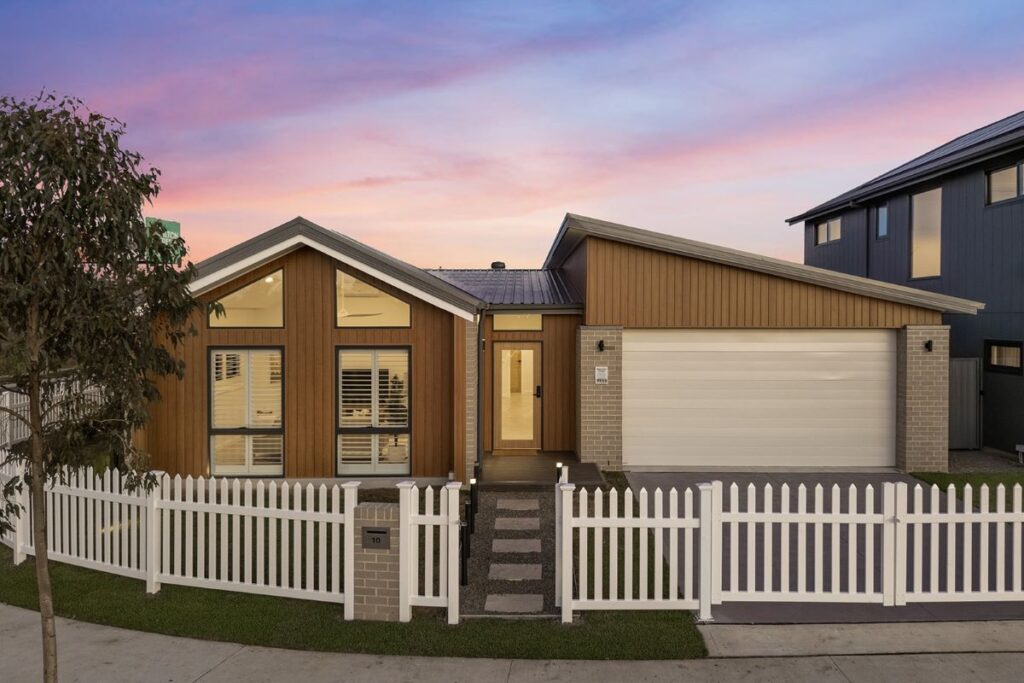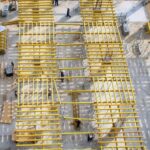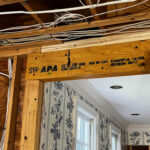Choosing the right architect can make or break your construction project. The difference between a dream home and a costly nightmare often comes down to choosing architects Kiama who understand your vision and have the skills to bring it to life.
When it comes to hiring architects Kiama, it’s important to carefully consider their expertise, communication style, and approach to project management. Local architects have valuable knowledge of regional building codes, climate considerations, and council requirements that can save time and prevent expensive mistakes during construction.
Architectural project planning becomes much easier when you establish clear expectations from the beginning. The right questions help you evaluate whether an architect’s working methods align with your needs, budget, and timeline.
Smart clients know that a thorough vetting process protects their investment. By asking specific questions before signing contracts, you can identify potential issues, understand fee structures, and ensure your chosen architect has the necessary credentials and experience.
The 10 Questions to Ask Before Hiring Architects Kiama for Your Next Project will guide you in making an informed decision that sets your project up for success.
1. What is your design process?
The architect design process forms the backbone of any successful project, making this question essential when evaluating potential architects in Kiama. Each professional follows a unique architectural workflow Kiama residents should understand before committing to a partnership.
A comprehensive design approach architects use typically includes these key phases:
- Initial consultation – Gathering your requirements, budget parameters, and vision
- Concept development – Creating preliminary sketches and spatial arrangements
- Design refinement – Developing detailed plans with your input and feedback
- Technical documentation – Producing construction drawings and specifications
- Council submission – Preparing and lodging development applications
Understanding how your architect moves through these stages reveals their working style and communication preferences. Some professionals prefer collaborative approaches with frequent client meetings, while others work more independently between milestone presentations.
Ask specific questions about client involvement at each phase. When do they seek your approval? How do they incorporate feedback? What happens if you want significant changes during development?
The architect’s response illuminates whether their methodology aligns with your expectations for involvement and control over the creative process.
2. Can I see your portfolio and references?
An architect portfolio Kiama serves as your window into their creative capabilities and technical expertise. Quality portfolios showcase diverse projects with clear before-and-after images, detailed drawings, and project specifications that demonstrate the architect’s range and skill level.
Past projects architects have completed reveal crucial information about their experience with similar builds. Look for projects that match your scope – whether residential extensions, commercial developments, or heritage renovations. Pay attention to:
- Design aesthetics that resonate with your vision
- Problem-solving approaches for challenging sites
- Material choices and construction quality
- Project scale comparable to your requirements
Architectural references provide authentic feedback from previous clients about communication, timeline adherence, and budget management. Contact at least three recent clients to discuss their experience. Ask specific questions about the architect’s responsiveness, ability to handle unexpected issues, and whether they would hire them again.
Portfolios also indicate specialisation areas – some architects excel in sustainable design, others in heritage work or contemporary builds. This specialisation becomes vital when your project requires specific expertise or local knowledge of Kiama’s unique coastal environment and planning requirements.
3. How do you manage project timelines and budgets?
Project timeline management architects must demonstrate clear methods for keeping your build on track. Ask potential architects to explain their approach to breaking down complex projects into manageable phases, from initial design concepts through to final construction completion. Experienced budgeting architects Kiama use detailed project scheduling software and historical data from similar builds to create realistic timeframes that account for local factors like weather patterns and material delivery schedules.
Construction budget control requires proactive strategies rather than reactive solutions. Quality architects establish contingency funds (typically 10-15% of total budget) and implement regular cost tracking systems. They should outline specific protocols for handling unexpected expenses, such as:
- Weekly budget reviews with detailed cost breakdowns
- Pre-approved change order procedures to avoid delays
- Alternative material sourcing when original specifications exceed budget
Communication protocols form the backbone of successful project management. Your architect should specify how often they provide updates, whether through weekly reports, monthly meetings, or digital project dashboards. Clear documentation of all financial changes protects both parties and ensures transparency throughout the construction process.
4. What challenges do you foresee with my project?
A skilled architect should identify potential obstacles before they become costly problems. Local zoning Kiama regulations can significantly impact your project’s scope, height restrictions, and setback requirements. Your architect’s familiarity with these rules helps avoid delays and redesigns.
Site-specific challenges require careful assessment:
- Slope and drainage issues that affect foundation design
- Soil conditions requiring special engineering solutions
- Access limitations for construction vehicles and materials
- Heritage overlays or environmental protections in certain Kiama areas
Architects experienced with building codes compliance can spot regulatory hurdles early. They understand which permits are needed and how long approval processes typically take in the local council.
Project challenges architects commonly encounter include:
- Neighbour consultation requirements for boundary variations
- Bushfire-prone area restrictions affecting materials and design
- Coastal environment considerations for weather resistance
An architect’s prior knowledge of local regulations proves invaluable during the planning phase. They can suggest design modifications that satisfy council requirements whilst maintaining your vision, preventing expensive revisions during the approval process.
5. How is payment structured?
Understanding architect fees Kiama structures protects you from budget surprises and ensures clear financial expectations from project start. Different architects use varying payment terms architecture services, making this conversation essential before signing any contracts.
Fee Models to Discuss:
- Fixed price arrangements provide predictable costs for defined project scope
- Hourly rates offer flexibility but require careful monitoring of time spent
- Percentage-based fees tied to total construction costs
- Hybrid models combining elements of different approaches
Request detailed breakdowns of what each fee structure includes. Some architects bundle initial consultations, design development, and construction documentation into one price, while others charge separately for each phase. Cost transparency architects should provide written estimates covering:
- Design concept development
- Technical drawings and specifications
- Council submission preparation
- Site visits during construction
- Project management services
Ask about potential additional charges for design revisions, extended consultation periods, or expedited services. Establishing clear payment schedules—whether monthly, milestone-based, or upon completion of specific deliverables—prevents misunderstandings and helps maintain positive working relationships throughout your project.
6. Do you provide architectural models or 3D drawings?
Visual representation transforms abstract architectural concepts into tangible designs that clients can genuinely understand. 3D architectural models Kiama professionals create serve as powerful communication tools that bridge the gap between technical drawings and your vision.
Benefits of visual design tools include:
- Clear spatial understanding – Models reveal how rooms connect and flow together
- Material and colour visualisation – See exactly how finishes will appear in natural light
- Scale appreciation – Understand true proportions before construction begins
- Design confidence – Make informed decisions with complete visual clarity
Client visualization architecture tools enable meaningful feedback during design development. When you can walk through virtual spaces or examine physical models, identifying necessary adjustments becomes straightforward. This collaborative approach prevents costly changes during construction phases.
Architects may offer different representation formats:
- Digital renderings – High-quality computer-generated images and virtual tours
- Physical scale models – Tactile representations using various materials
- Interactive 3D software – Real-time design exploration capabilities
Ask specifically about which visual tools your architect provides and whether these services incur additional fees. The investment in proper visualisation pays dividends through reduced miscommunication and enhanced project satisfaction.
7. What level of involvement do you expect from me during the design process?
Understanding client involvement architecture process expectations prevents misunderstandings and ensures productive collaboration. Different architects have varying approaches to client participation, making this question essential for establishing a successful working relationship.
Your architect should clearly outline your role during each project phase:
- Initial concept development – How much input you’ll provide on design direction
- Design refinement stages – When your feedback becomes most valuable
- Final approval processes – Which decisions require your direct sign-off
- Construction documentation – Your review responsibilities for technical drawings
Communication expectations architects Kiama vary significantly between practices. Some prefer weekly check-ins via email, whilst others schedule formal presentations at key milestones. Ask about:
- Preferred communication methods (phone, email, in-person meetings)
- Response time expectations for feedback
- Meeting frequency during different project phases
- How urgent decisions will be handled
Establishing clear collaboration with architect boundaries early prevents scope creep and maintains professional relationships. Define which design elements require your approval versus those the architect can proceed with independently. This clarity protects both parties and keeps projects moving forward efficiently.

8. Can you recommend trusted builders or contractors?
Builder recommendations Kiama can make or break your construction project. Architects who maintain strong contractor partnerships architects often provide access to skilled professionals who understand their design intent and construction methods. These established relationships create a foundation for smoother project execution.
Experienced architects develop networks of reliable construction teams through years of collaboration. When an architect recommends specific builders, they’re drawing from direct experience working together on similar projects. This familiarity reduces the learning curve and potential miscommunication during construction phases.
Key benefits of architect-recommended contractors include:
- Design familiarity – Builders who regularly work with your architect understand their drawing standards and specifications
- Quality assurance – Architects recommend contractors based on proven track records of meeting their standards
- Risk reduction – Established partnerships often result in fewer disputes and construction delays
Before accepting recommendations, evaluate each contractor’s compatibility with your specific project scope. Request examples of their work on similar builds and verify their licensing and insurance status. The architect’s network provides a starting point, but the final decision should align with your budget, timeline, and quality expectations.
9. Are sustainable or energy-efficient design options available?
Sustainable architecture Kiama projects require architects who are knowledgeable about eco-friendly building practices. When considering potential architects, it’s important to ask them about their experience with green building materials such as recycled timber, low-VOC paints, and sustainable insulation options. Many architects now specialise in energy-efficient building design that not only reduces long-term operating costs but also minimises environmental impact.
Here are some specific techniques you can inquire about:
- Solar panel integration and optimal building orientation
- Natural ventilation systems and thermal mass design
- Water collection and greywater recycling systems
- Energy-efficient windows and insulation strategies
The financial benefits of these sustainable design options go beyond just being environmentally responsible. On average, energy-efficient homes can reduce utility bills by 20-40% each year, resulting in significant savings over the lifespan of the building. Additionally, properties with green features tend to have higher resale values in today’s market.
It’s also worth asking about the architect’s experience with recognised certifications such as Green Star or NABERS ratings. Architects who are familiar with these standards can provide guidance on rebate programs and government incentives that are available for sustainable construction projects. Their expertise will ensure that your project complies with environmental regulations while maximising your investment in 10 Questions to Ask Before Hiring Architects Kiama for Your Next Project.
See Also : Why Choosing an Architect Kiama Can Transform Your Coastal Home Design
10. Do you have necessary insurance and licences?
Architect licensing Kiama requirements demand specific qualifications that protect both you and your project. Licensed architects must complete rigorous education, training, and examination processes before receiving authorisation to practice. Ask to see current registration certificates and verify their status with the Architects Registration Board.
Professional insurance architects carry serves as your financial safety net. Professional indemnity insurance covers design errors, omissions, or negligent advice that could result in costly rectification work. Public liability insurance protects against property damage or personal injury claims during site visits or consultations.
Legal credentials architecture professionals possess create multiple layers of protection:
- Regulatory compliance – Licensed architects understand building codes and planning requirements
- Quality assurance – Professional standards mandate continuing education and ethical practice
- Dispute resolution – Access to professional bodies’ complaint procedures and mediation services
- Financial security – Insurance coverage for design-related issues that emerge during or after construction
Request copies of current insurance certificates and verify coverage amounts match your project’s scope. Uninsured or unlicensed practitioners may offer lower fees, but expose you to significant legal and financial risks that far exceed any initial savings.

Conclusion
These 10 Questions to Ask Before Hiring Architects Kiama for Your Next Project serve as your essential hiring checklist architecture projects. Each question reveals critical insights about potential architects – from their design approach and portfolio quality to their project management skills and professional credentials.
Selecting architects Kiama tips become most effective when you take time to evaluate responses carefully. The right architect will welcome your questions and provide detailed, transparent answers. Their willingness to discuss challenges, explain processes, and share references demonstrates professionalism and confidence in their abilities.
Use this guide to compare different architects and make an informed choice. Your project deserves an architect who aligns with your vision, respects your budget, and brings proven expertise to transform your ideas into reality.





